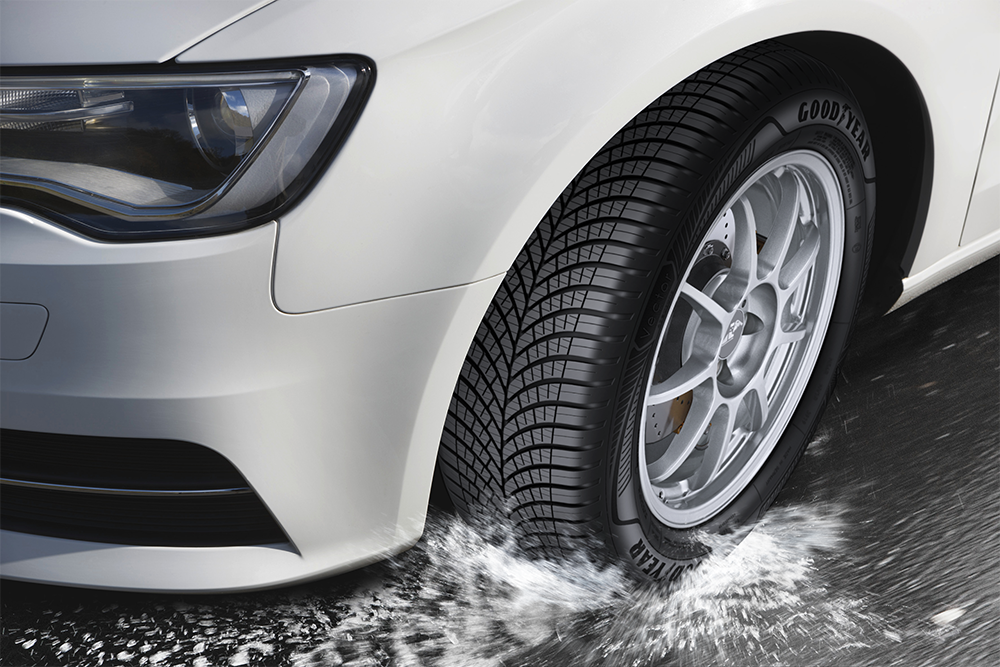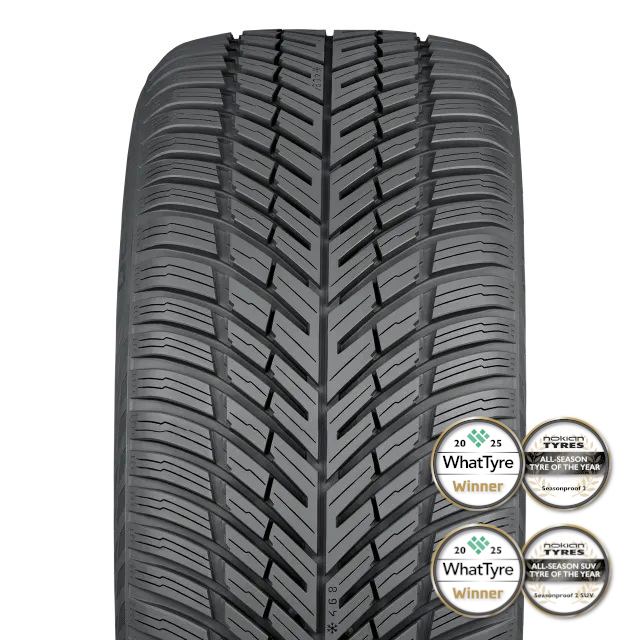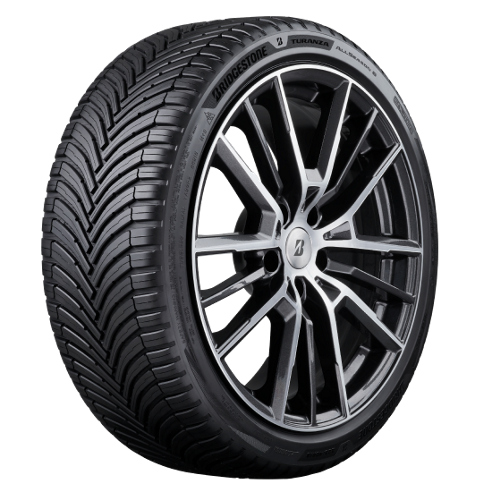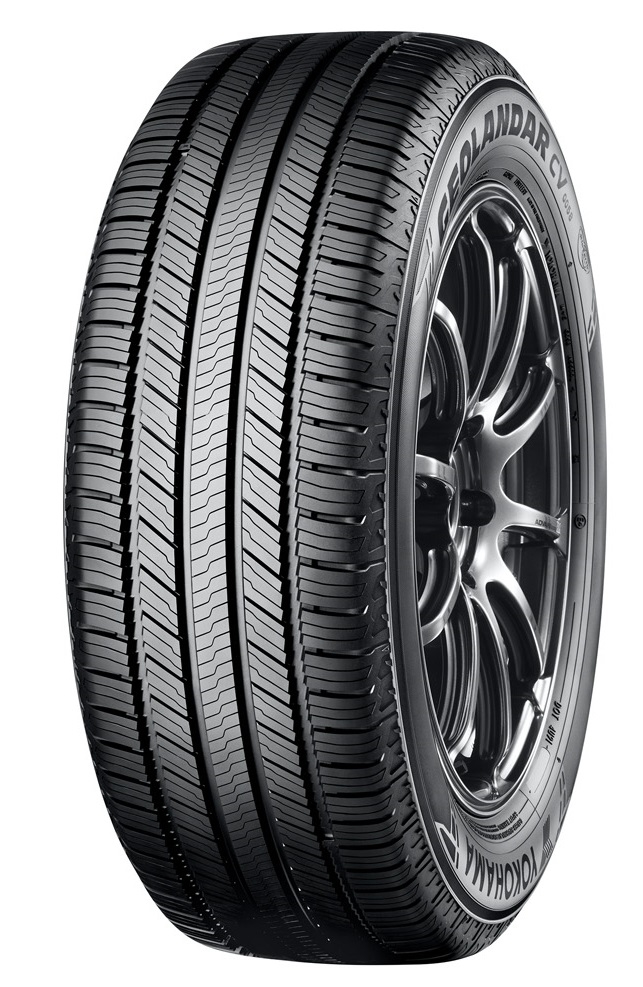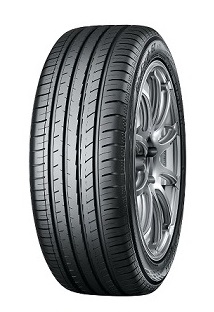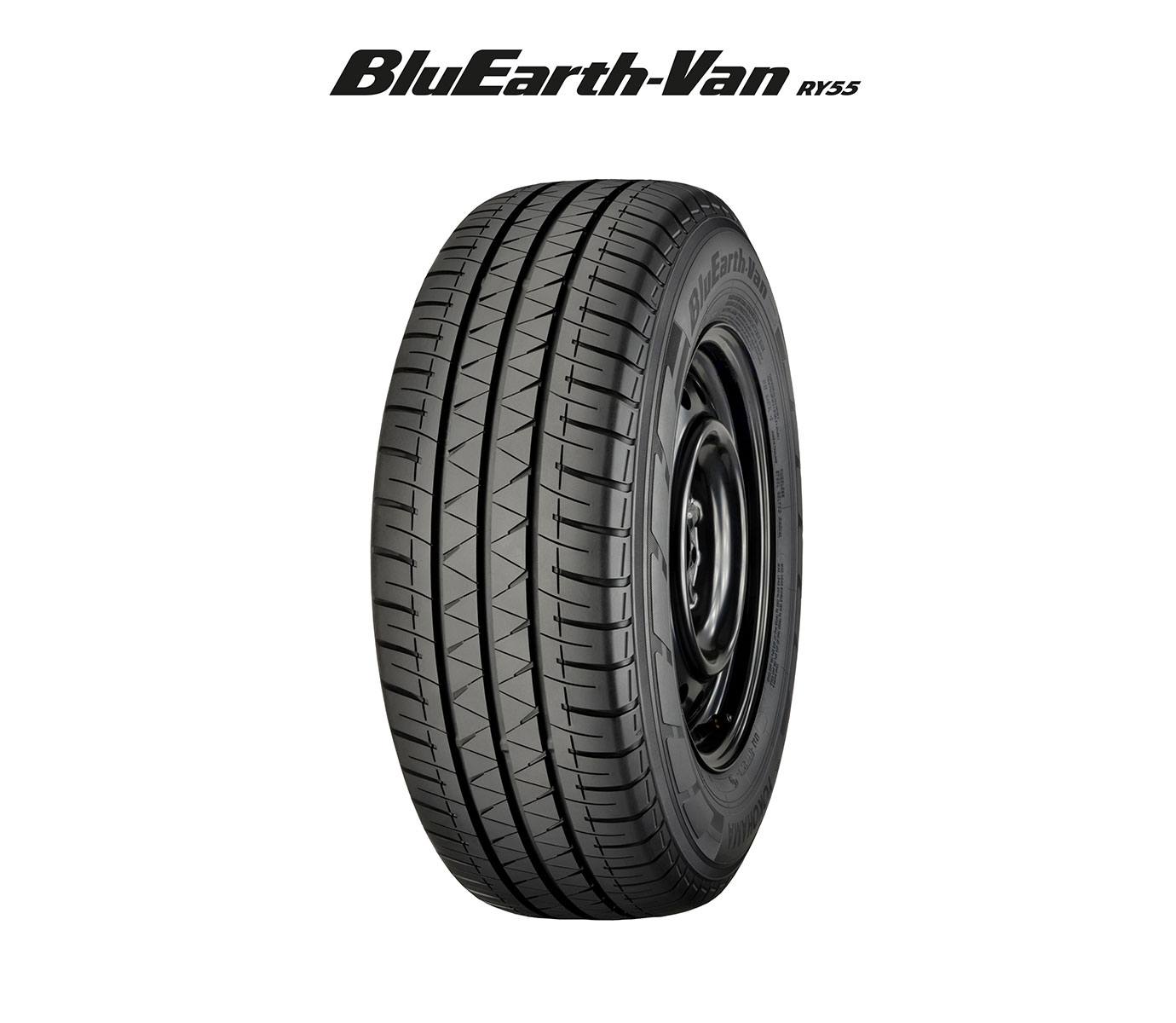
he many and varied weather experienced in Britain’s temperate climate means tyres that can endure and adapt to a wide range of conditions are increasingly popular in the UK (Photo: Enrique; Pixabay)
A relatively rarity a few years ago, the latest generations of all-season products have changed the face of markets across Europe. That might sound like an overstatement, but the latest market research shows that both the value and the volume of all-season tyre sales increased last year. At the same time, while the best-known names out there may have pioneered the breakthrough design of year-round tyres, many more tyremakers are attempting to follow suit. The question is: who is making the best all-season tyres currently on the market?
To answer that question, we analysed the information within our 300,000-tyre-plus tyrepedia database. With that many individual tyres across somewhere around 700 brands, we had to filter out a shortlist for judging purposes. In every category, the WhatTyre Tyre of the Year Awards begin with our unique Tyrescore algorithm. That complex and evolving dynamic calculation starts with the European tyre label data every tyre carries. The letter values used to grade wet-braking and fuel consumption are then converted into numbers and weighted as more important than the third major part of tyre labels – external pass-by noise. While it is there for well-intentioned environmental reasons, we weigh the calculation in favour of wet grip and fuel consumption because we believe those two are most important to the average motorist. It’s also because many motorists don’t realise the differences between external pass-by noise and internal cabin noise. The fact is, the latter can be significantly improved by a car’s noise-proofing. Nevertheless, the European tyre label’s noise rating is not disregarded. Rather, it takes a subtle step into the background in order for the other two categories to shine.
Furthermore, since wet-grip is arguably of even greater importance in an all-season tyre than a summer product, that’s another reason to weigh wet grip ahead of other less central performance characteristics.
Similarly, rolling-resistance – the technical behaviour that determines fuel consumption on the European tyre label – is really important in the world of all-season tyres. Of course, economic inflation and the cost-of-living crisis as well as ecological and sustainability arguments mean fuel consumption should be important for everyone. However, since all-season tyres are designed to remain robust and grippy at low temperatures, they have historically suffered from worse fuel consumption performance than summer tyres. The good news is that the latest all-season products have come on leaps and bounds in this respect. Indeed, this year’s test winner is A-rated – in other words it scored top markets (in at least some sizes) in terms of fuel consumption.
Thousands of European magazine tyre tests entries
But that’s just the first point of call when it comes to judging a winner. In fact, from WhatTyre’s point of view, comparing tyres on the basis of performance is better than not comparing them in terms of performance and certainly better than comparing them in terms of price alone. But the label just doesn’t go far enough. That’s why our Tyrescore cross-references each individual product’s tyre label grade with our database of thousands of European magazine tyre test entries.
Those tests are not only some of the most respected testing operations out there, they also test many more characteristics than the three key label datapoints described above. With their results taken into account en masse, the collective wisdom of a continent’s-worth of experts helps us get the best recommendations we can.
Factoring in sustainability
From here, our methodology starts taking into account a raft of more nuanced metrics.
For example, our publishing house routinely tracks the Environmental, Sustainability and Governance (ESG) standards of tyre manufacturers. In order to get a good grasp of how different tyremakers compare in this respect, we follow the metrics of several different third-party ESG accreditation bodies and calculate their scores into a single rating for each manufacturer. To cut a long and complex story very short, the leading manufacturers have been investing in sustainability for years. In addition, some of the up-and-coming brands are making great strides, but for many this point is a key differentiator in the contemporary tyre market.
We also give credit for OE homologation – when a well-known vehicle maker (an Original equipment Manufacturer or OEM) formally approves a tyre for use on particular makes and models of its vehicles.
Every year we add more data and refine the way we calculate the above Tyrescore, but one thing remains the same. As far as we can, we score in such a way that gives credit where credit is due for quality and performance. To be clear, every tyre shortlisted in these pages is in the top 10 per cent or even the top 1 per cent of the market for succeeding under this level of scrutiny where hundreds of brands and thousands of products didn’t.
Not everyone’s a winner
As groovy as the Hot Chocolate song may be, when it comes to tyres, not everyone’s a winner. Rather, building on the foundation of the Tyrescore, we generate a shortlist based on the top three sizes in each category as selected by the most recent third-party market research (see “UK trend towards Budget segment continues in smaller UHP tyre dimensions – GfK” – Tyres & Accessories magazine, June 2024 or online at tyrepress.com). And in this case – since it is the all-season category – all tyres must be three-peaks-mountain-snowflake (3PMSF) accredited for performance in the winter months. That two-pronged approach enables us to select tyres that actually perform in the right conditions all-year-round, whatever the weather as opposed to tyres that are simply called all-season-sounding names.
Next, we use our Tyrescore ratings for those three tyre “key” sizes (in this case: 205/55/16, 225/45/17 and 225/40/18) as the basis of our shortlist, choosing the best result as the key performance indicator of the model range. But we don’t stop there. Since one tyre in a range could be outstanding and another less admirable, we then cross reference the key size against the average for the entire range. Adopting that approach, helps highlight outliers on the one hand and the performance consistency of the whole range on the other. Since competition is so tough in the all-season tyre category to get into the final top seven all tyres have to score at least seven-out-of-ten in both the key size and on average across the range.
And finally, all our results were adjudicated by our team of three full-time independent journalists who all have between 15 and 20 years of experience writing about the tyre sector.
Goodyear Vector 4Seasons Gen3 wins What Tyre’s All-Season Tyre of the Year 2024
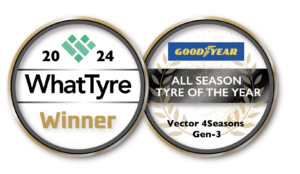 This year, competition was as intense as ever. But despite the intensity of scrutiny, the Goodyear Vector 4Seasons Gen3 returned to podium as a clear winner in the all-season category. What is particularly remarkable about the Vector 4Seasons Gen3’s victory is that it has returned to the top after previously winning in 2021. Indeed, one thing this indicates is that as our judging methodology has evolved to include a wider range of datapoints – including ESG – so Goodyear and its Vector 4Seasons Gen3 product range has grown too.
This year, competition was as intense as ever. But despite the intensity of scrutiny, the Goodyear Vector 4Seasons Gen3 returned to podium as a clear winner in the all-season category. What is particularly remarkable about the Vector 4Seasons Gen3’s victory is that it has returned to the top after previously winning in 2021. Indeed, one thing this indicates is that as our judging methodology has evolved to include a wider range of datapoints – including ESG – so Goodyear and its Vector 4Seasons Gen3 product range has grown too.
Performance wise, the Vector 4Seasons Gen3 stands out in terms of fuel consumption as it is achieved top marks (an A-rating) in that facet of performance. Furthermore, when each point of performance power was divided by the average price of tyres in this particular Goodyear range, the Vector 4Seasons Gen3 offered the biggest bang for your buck out there. And that means that the Vector 4Seasons Gen3 is also this year’s all-season value champion.
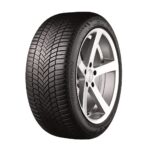
Bridgestone’s A005 Weather Control Driveguard Evo
Such was the competition this year, the Bridgestone A005 Weather Control Driveguard Evo was just 0.18 points behind this year’s winner. The key size scored an A in its tyre label rating too, only this time it was for wet-grip performance rather than fuel consumption. When the range as a whole is taken into consideration, many products go even further than this particular entrant, which suggest there is a depth of quality across the A005 Weather Control Driveguard Evo range. And what’s more, since this particular A005 Weather Control is designated Driveguard, that means it is also a run-flat capable product. For a tyre to perform this well in all-season conditions and be a run-flat is quite noteworthy. And for these reasons the Bridgestone A005 Weather Control Driveguard Evo is Highly Recommended in the What Tyre all-season Tyre of the Year 2024 category.
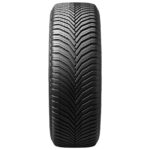
Michelin CrossClimate 2 (Photo: Michelin)
As a previous winner, it is no surprise to learn that the Michelin CrossClimate 2 also made it to the podium again this year. When it came to the 205/55/16 variant, the CrossClimate 2 achieved second best result there and a very high average performance quotient across the range. If it missed out on anything, it was slightly behind on that range-wide average and with the real-world reality that quality of this calibre usually costs. But make no mistake, this too is a first-rate all-season tyre. The Michelin CrossClimate 2 represents the latest generation of the pioneering year-round technology that pretty-much set the pace of modern all-season tyres. With all that in mind, it is no surprise to see this tyre continue to shine, whatever the weather
Next up was the Pirelli Cinturato All Season SF2, which also offers strong year-round performance across the board and an A-rating in wet grip in its key size, 205/55/16 94 H. Another key strength highlighted in our research, is that – when all the sizes out there are considered – the Pirelli Cinturato All Season SF2 range is the most consistent all-season line-up out there bar none, with just 0.11 Tyrescore points separating the top form the bottom. However, as good as it is it didn’t quite hit the peaks of the podium-dwellers above it. In February, Pirelli released the Cinturato All-Season SF3, which we fully expect to be giving this year’s podium a run for their money in the 2025 awards. We may have ranked the Pirelli Cinturato All Season SF2, but in February 2024, Pirelli introduced the new Cinturato All Season SF3, a tyre Pirelli was “designed specifically for city drivers of medium and compact cars who need a safe solution all year round.” Set to hit the market in 16 to 20-inch sizes from around April, sadly – there isn’t enough data from magazine tests and our other datapoints to rank the latest variant in these pages. However, the fact that the SF2 still performs as it does bodes well for Pirelli in next year’s awards.
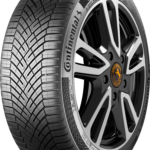
Continental AllSeasonContact 2 (Photo: Continental)
It is a similar story when it comes to the Continental AllseasonContact 2, where a gossamer-thin margin separates it from competitors. However, it is worth noting that the AllseasonContact 2 offers better fuel consumption. And therefore, consideration must be given to this tyre as much as its direct competitors. Reporting on its launch last May, we learnt that Continental’s tyre developers took a two-pronged approach when increasing efficiency in the AllSeasonContact 2. First, they tackled rolling resistance. But, while optimising rolling resistance in the tread area almost inevitably leads to a compromise in handling or wet braking, Continental engineers overcame that tension by focusing on in-tyre construction. The result is a tyre worthy of all-season consideration as much as those above it.
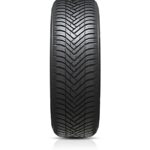
Hankook Kinergy 4S2 (Photo: Hankook)
The Hankook Kinergy 4S 2 H750 also offers strong performance across the board. Indeed, averaged out across its whole range, the Hankook line-up was hardly distinct from the levels of the podium products. And for that reason, we have no hesitation in commending this product. The Hankook Kinergy 4S2 offers wide lateral grooves, which are designed to allow it to drain water quickly. In the dry, the tyre is designed to offer “short braking distances and impressive handling”. It also features a special bead filler for “stable handling and steering behaviour”. Well-regarded in European tyre tests, UK publications have noted its particular suitability for our moderate climate.
The top 7 is rounded off by the Vredestein Quatrac, which was the only other tyre in our database to be able to achieve all the benchmark data in both its key size and on average across is range. Congratulations to Vredestein Quatrac, a worthy recipient of our commendations. At its launch, Vredestein described the Quatrac 5 as “almost a reboot of the Quatrac name, with big improvements across a variety of performance characteristics”. Specifically, its dry handling was improved by 12 per cent, plus wet handling and wet braking were made 20 and 10 per cent better respectively. Company representatives explain that the new tyre is “environmentally-friendly, with newer materials reducing weight and rolling resistance…leading to better fuel economy”.
Just missed out
With a category as competitive as all-season tyres, our judging criteria had to be stricter and more rigorous than ever. That being the case, many worthy products were cut at the final shortlisting stage. That’s not to say that they aren’t good products. Far from it. It was simply that the bar was very high. So, with that in mind, we think a number of other tyres are worthy of consideration including: Falken’s AS210 Euroall Season (now updated in the AS220), the Nokian Seasonproof/Seasonproof 1, the BF Goodrich G-Grip All Season 2, the Kleber Quadraxer 2 and the Maxxis Premitra AP3.

